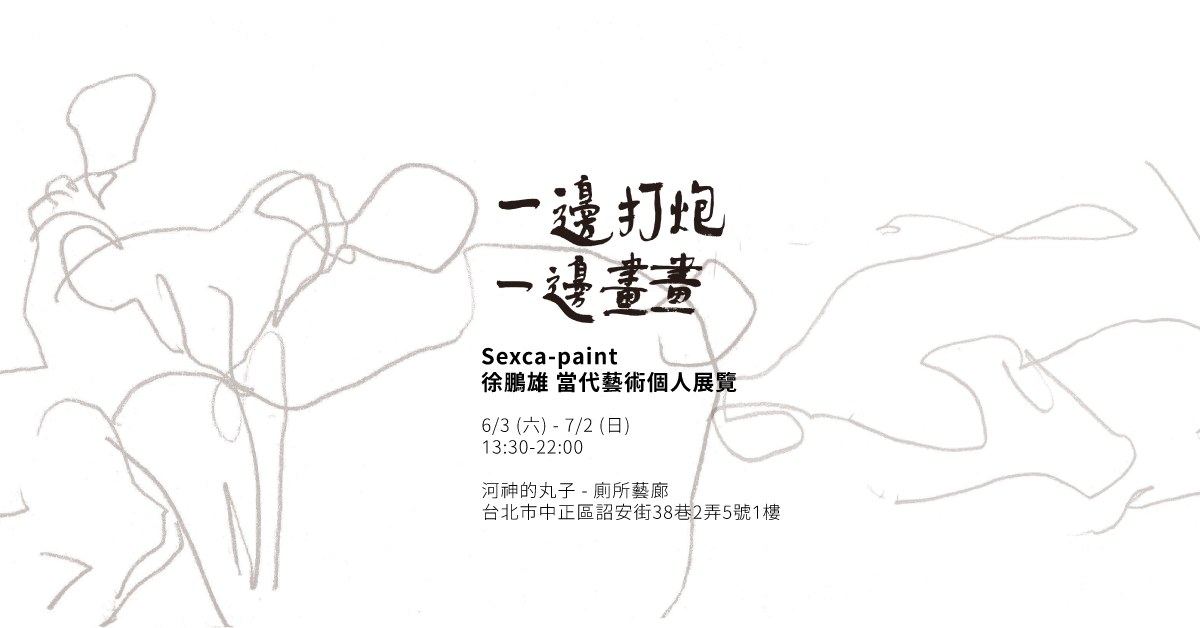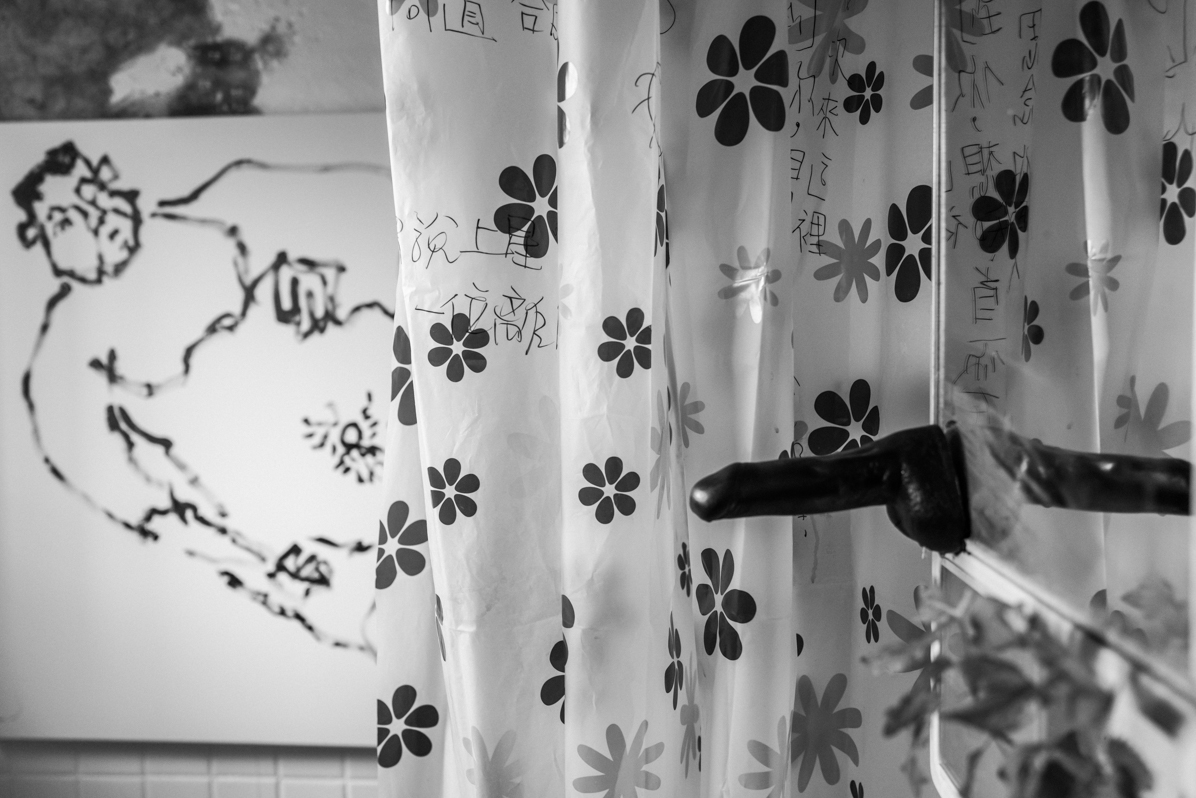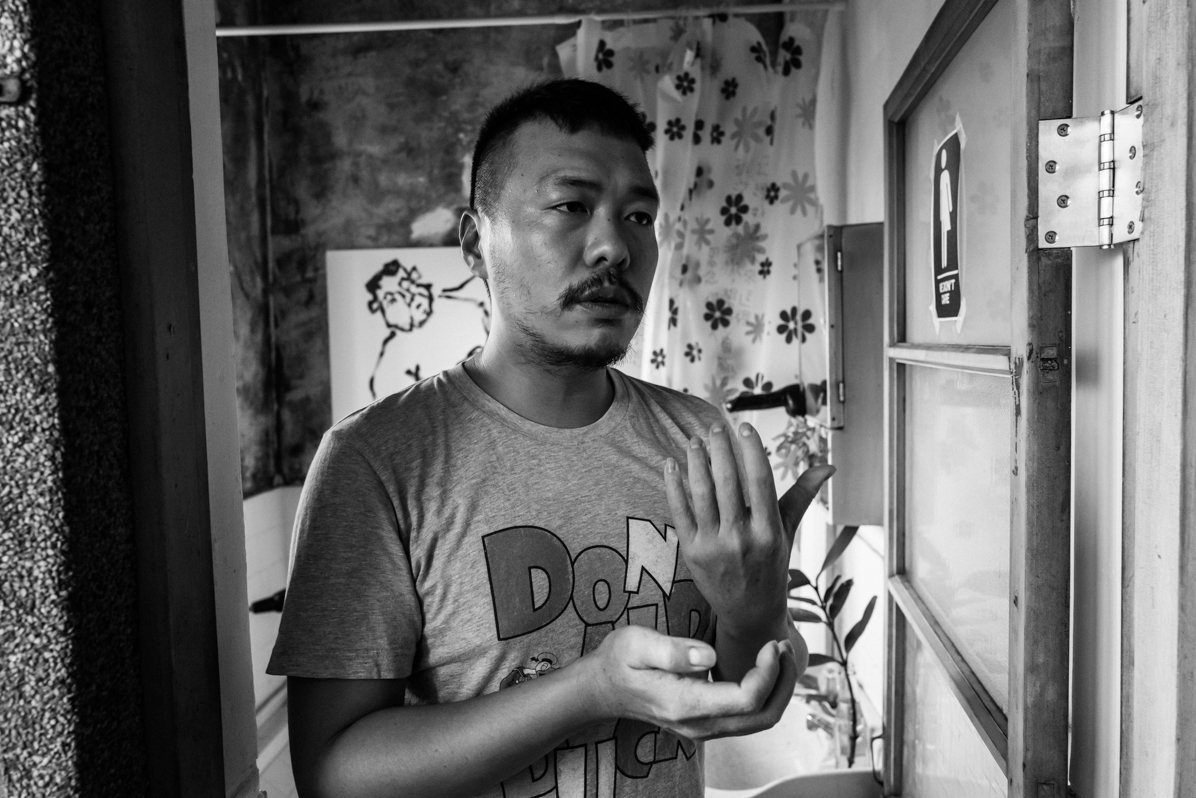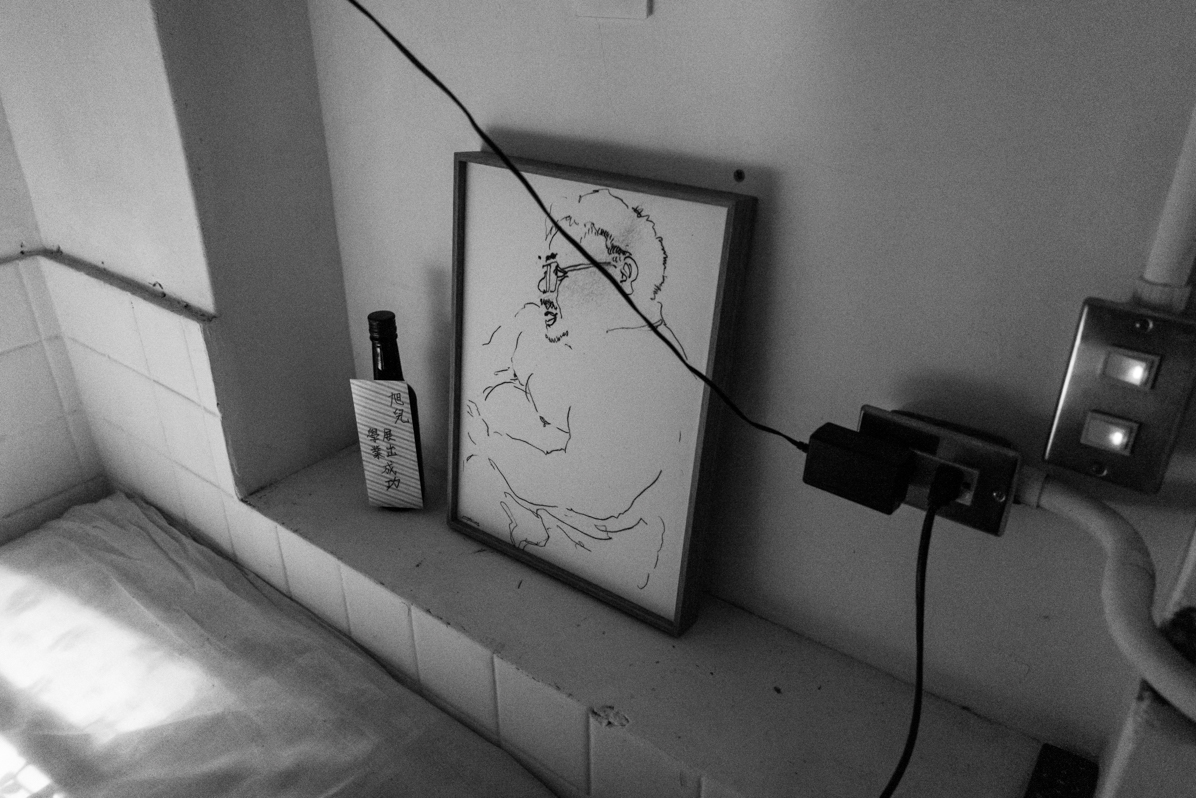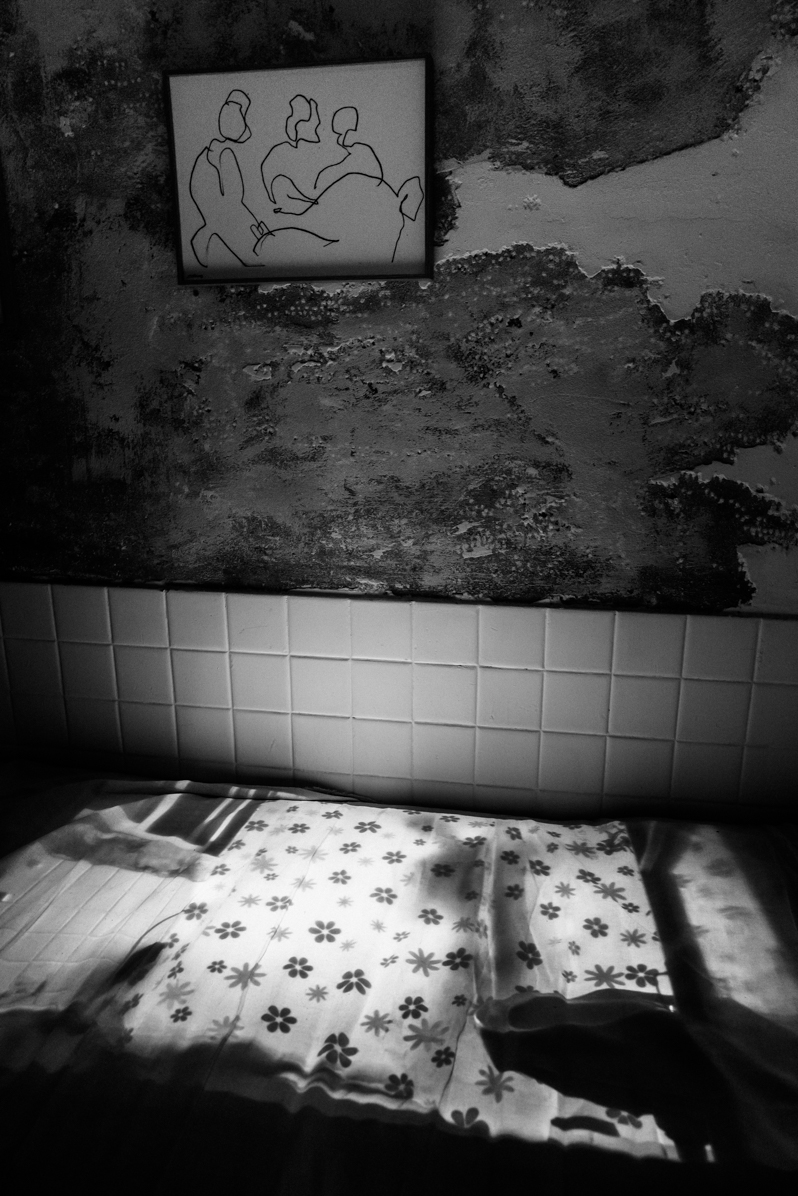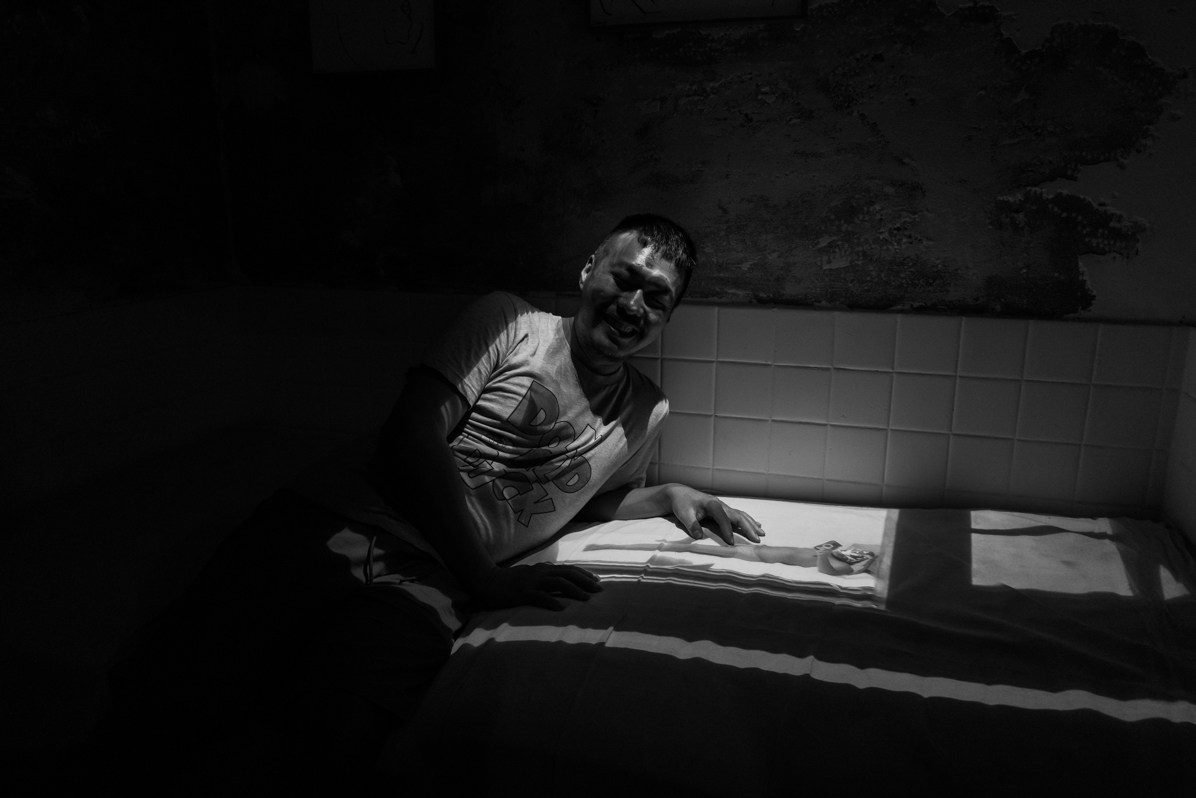by Enbion Micah Aan
語言:
English
Photo Credit: Enbion Micah Aan
WHEN I WENT to the gallery at Ho Sng House (about a 10-15 minute walk from Guting station) to see Peng Hsiung Hsu’s Sexca-paint (一邊打砲,一邊畫畫) exhibition, the artist was there in person to offer a guided tour. I was handed a lollipop as part of the experience: “The lollipop is part of the exhibition.”
Photo credit: Enbion Micah Aan
The exhibition takes place outside the gallery space, in the bathroom, and the storage room. On the opening day, the artist painted a supposed sex partner in the bathtub, with a live projection outside the bathroom. Initially, Hsu planned on having sex in the tub and painting. However, because such an exhibition would put the gallery in a legal gray area, Hus opted for painting without having sex. The video footage remains part of the exhibition and is projected onto a bed in the storage room. The bed is a functional bed that one can sleep on. “One could have sex right there,” Hsu explained.
The drawings are of sex partners Hsu encountered in bathhouses, dating apps, and sex parties. They are gesture drawings done in ink. Though made in a sexually explicit manner, the paintings merely suggest sex and do not show graphic sex. Some are insightful portraits of the individuals, and some are group sex depictions that illustrate a fraternity rather than the physical act of sex. Although none of the individuals are identifiable, as the paintings are abstract line drawings, Hsu received explicit permission from the collaborators before painting them. Hsu stressed that he would not have met any of the individuals without prior agreement, and this is why there’s been no me-too scandal around the exhibition when Taiwan is currently witnessing a tsunami of me-too accusations.
Other subtle and meaningful touches include a penis-shaped soap and writings on the shower curtain. The words on the shower curtain reference a chapter in Taiwan’s dark history (a historical situation I hope we will never see again) when gay life was underground. As Hsu explained, such communication was vital to the gay community at the time, with coded messages ranging from searching for partners to obituaries.
Photo credit: Enbion Micah Aan
The paintings and the exhibition give viewers a sense of intimacy, but the actual act of sex feels normal, healthy, and in fact, ordinary. The artist achieved this quality with his attentiveness to the current cultural climate around LGBT+ issues in Taiwan, as gay sex, particularly sex among gay men, is often still seen in less-than-healthy and even less-than-human ways. Recent polls suggest that public support for the LGBT+ community has retreated significantly after four years of gay marriage legalization. On legal issues, Hsu also stressed that the legalization of gay marriage is not the end point of LGBT+ activism, but should be seen as the beginning of the struggle, as many issues still need to be worked out, such as same-sex couples’ international adoption.
As I walked through the exhibition, it struck me how strange and awkward heterosexual sex can be in the eyes of heterosexuals – gay sex, often still seen as sodomy, can be much more healthy and wholesome to its participants. Ironically, heterosexual sex is often perceived as a game of power, domination, and manipulation, situated in epistemic cynicism, while same-sex sex, at least in the context of this exhibition, can be more authentic – that sex is sex. Such a sentiment reminded me of Holly, a character in Terrence Mallick’s 1973 masterpiece Badlands when she questioned why there’s so much fuss around sex after having sex for the first time.
Overall, the exhibition gives viewers a rare glimpse of what is normally not talked about in gay life. It successfully depicts sex as an ordinary act, like going to a restaurant to eat, a cafe to sip coffee, or a gallery to see art. Perhaps, the lollipop was a way to frame sex in a more natural and wholesome way – the lollipop, in this case, can function as a phallic symbol as well as what it is – simply candy. Hsu’s Sexca-paint exhibition is a conceptually strong exhibition reminicent of Vito Acconci’s performance art, with a solid direction that promotes a healthy attitude towards gay sex. Such an exhibition weaves seamlessly into Taiwan’s current cultural dilemma around LGBT+ issues and non-gay imagination of gay sex.
Photo credit: Enbion Micah Aan
Hsu is planning to attend art school in Prague later this year, and if you are an art lover, I strongly recommend this exhibition and keep up with Hsu’s social media. This exhibition demonstrates the artist’s superb ability to engage the viewer, and I have little doubt that Hsu will be a great contributor to the art world one day.


